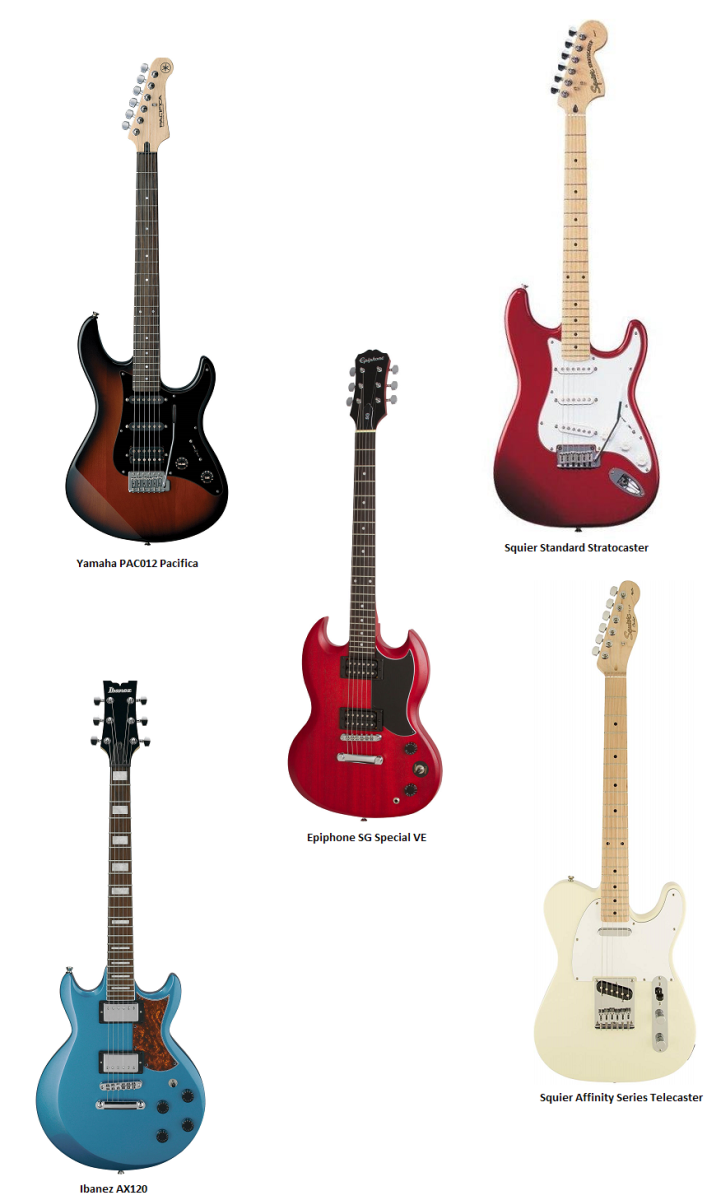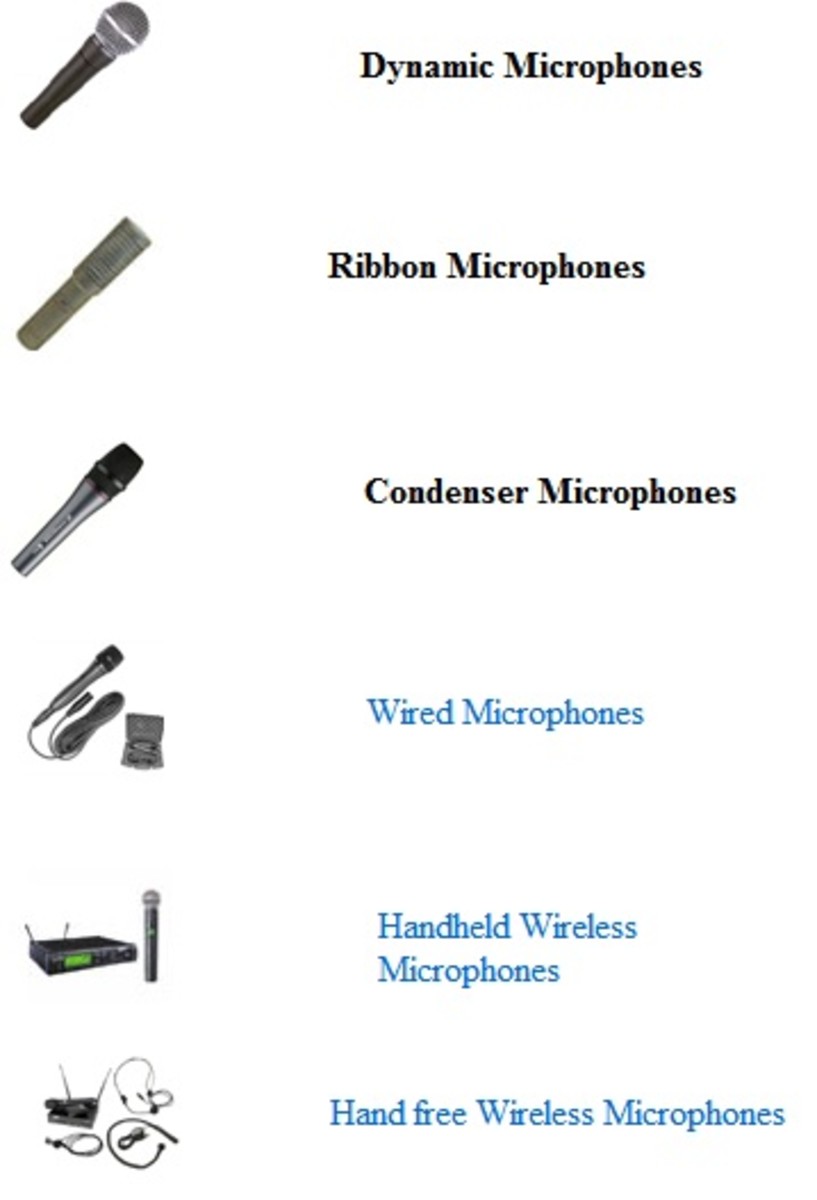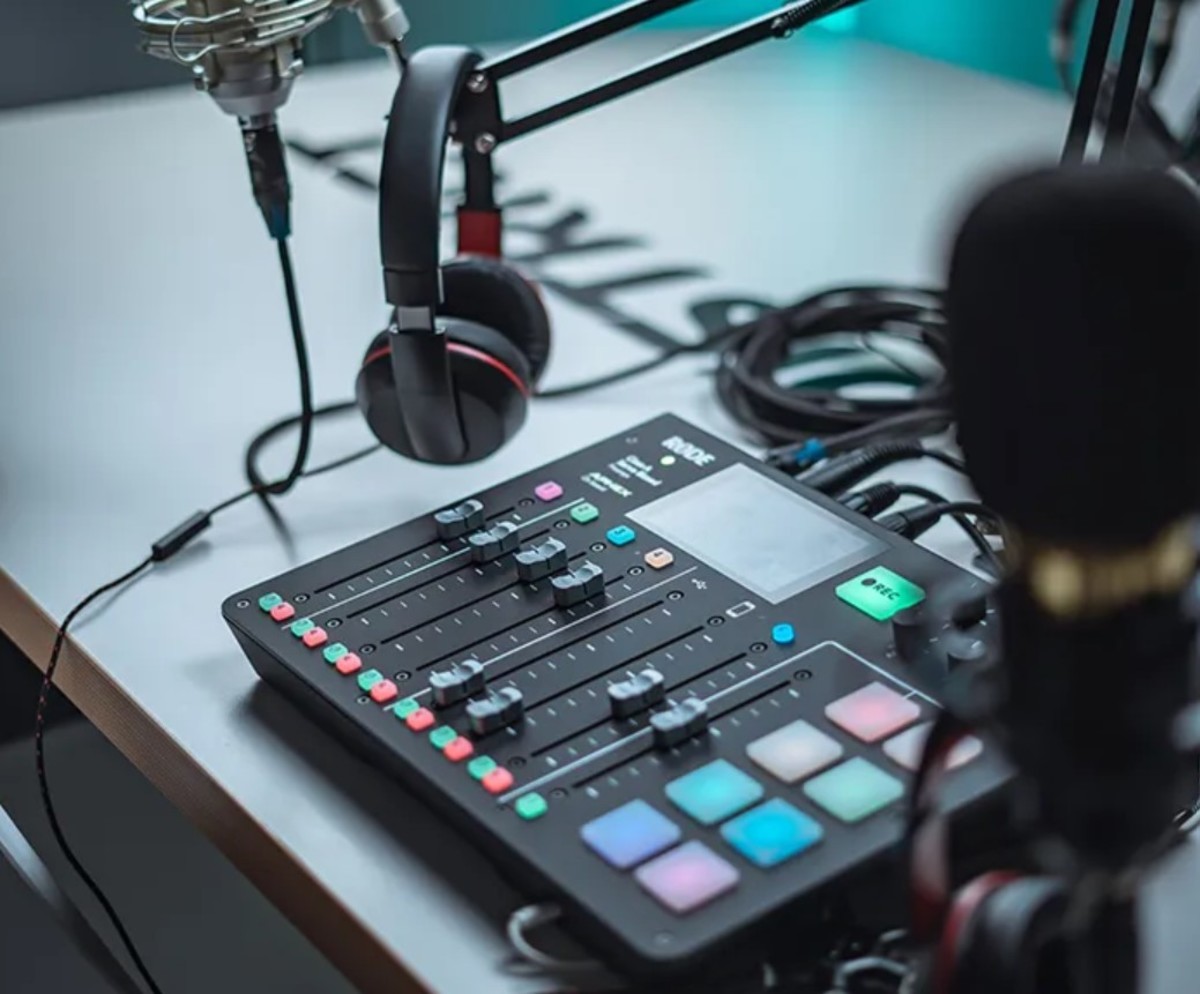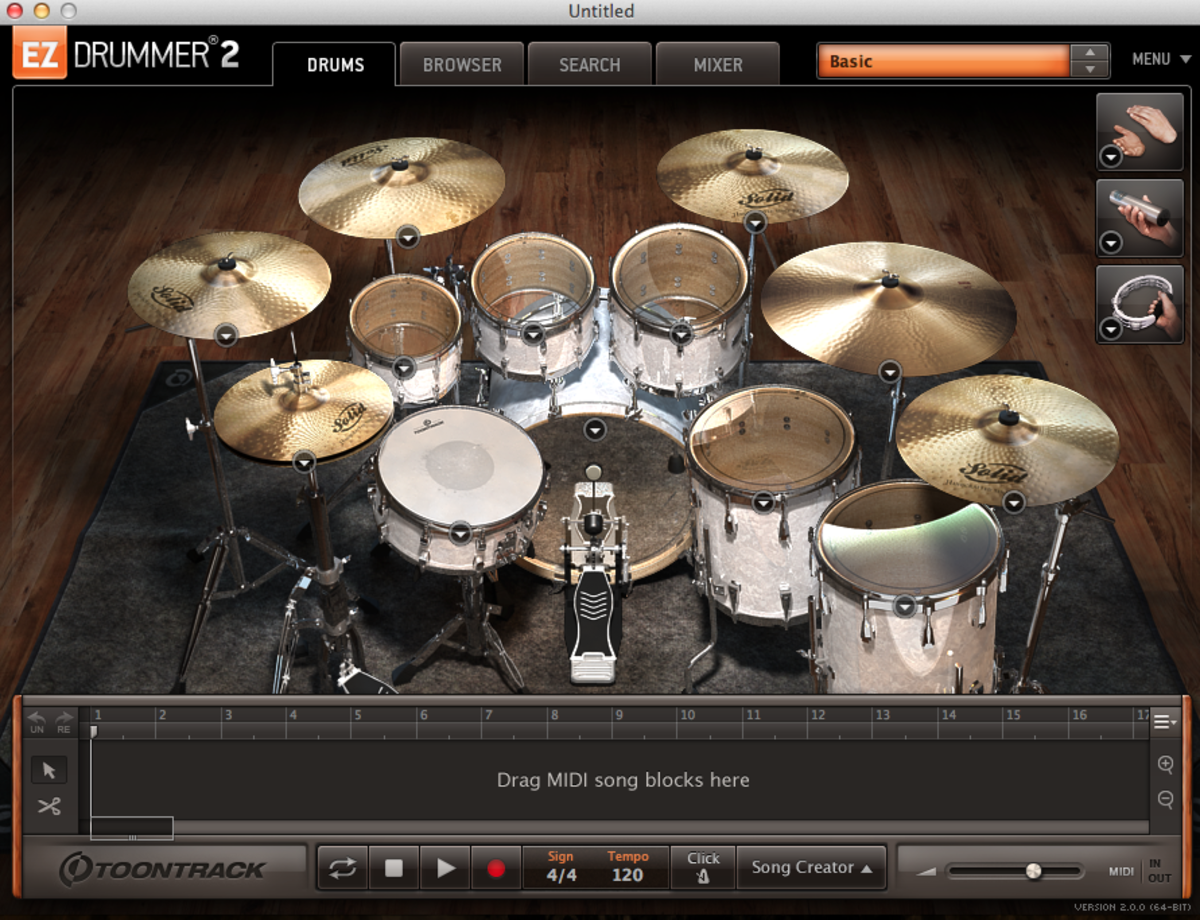7 Ways to Record Electric Guitar
The electric guitar is an instrument that everyone likes to record their own special way, or their own favorite microphones. I am going to show you a few common examples that are tried and true. These are techniques that I use regularly at work - I am an audio engineer at Rocking Horse Studio, one of the finest recording studios in New England. You can use these techniques as is, or use them as a "jumping off point" to develop your own techniques. Feel free to experiment and switch up microphones or adjust the positioning. Doing this will help you expand as an engineer and allow you to have a better mental picture of how things will sound.
Before You Begin
A speaker cabinet usually sounds good when raised off of the floor. This eliminates reflections off the floor that can cause comb filtering or other weirdness.
The positioning of the microphone can make a huge difference in tone. In general, moving the mic closer to the center of the speaker (dust cap) will give you more high end and detail. Closer to the edge of the speaker will give more low end and often less clarity. Angling the mic will often reduce harshness.
Microphones with a cardioid polar pattern are susceptible to the Proximity Effect. This means that the closer the mic is to the sound source, the more low-end response you will have.
Keep these things in mind when you are experimenting with these options.
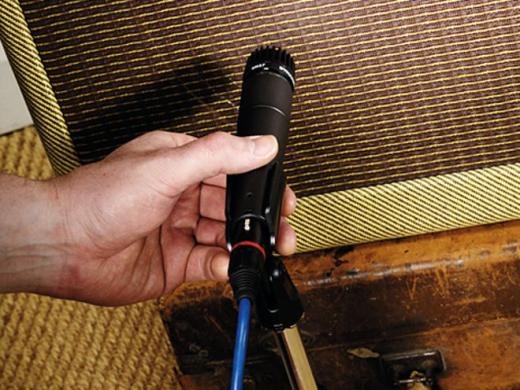
57 on the Grill
This is the most basic technique and also very common. During most live events, this is how electric guitars are mic'd. It is easy and it is always an okay sound. However, at my studio, we hardly ever do this for anything more than just scratch guitar tracks. We have the luxury of using expensive tube mics and running multiple mic lines, that maybe someone tracking in their bedroom wouldn't have. However, great guitar sounds can still be achieved with this straight-forward setup.
This technique consists of simply placing a Shure SM 57 pointing directly at the speaker, a few inches away. It's exact positioning can, of course, be tweaked, keeping in mind the points mentioned above. Generally, a good starting point is halfway between the edge and the dust cap, pointing straight on. The Shure SM 57 is a common and reliable mic for this, but there are many other mics that will work (possibly better) in this application. At Rocking Horse Studio, we are more likely to do this technique with something like a Beyer-Dynamic m88 or 201, or the Shure SM7. The Sennheiser 609 is specifically designed for this. Any of these microphones will work for this basic, yet effective, technique.
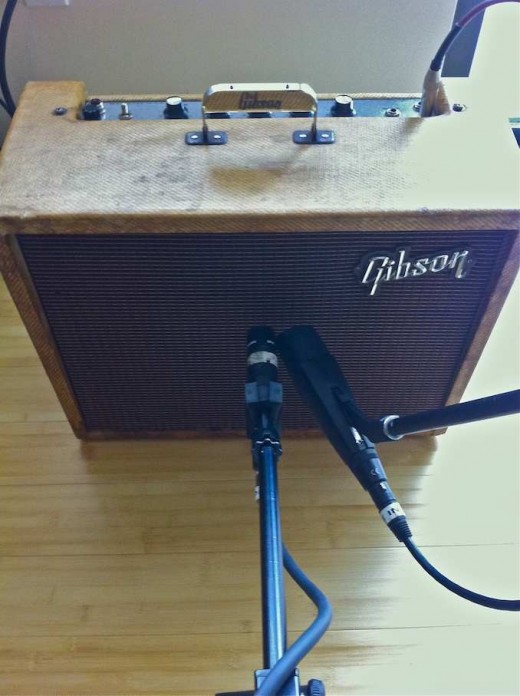
The Dynamic Angle Dangle
It's is one of my favorite techniques for an aggressive guitar sound. Place a mic like a sm57 as stated in the previous technique. Then add a Sennheiser MD421 in the same position, but angled approximately 45 degrees. I like to make it so the 421 is perpendicular to the angle of the cone. Make sure the the capsules for the two mics are in the same spot to keep the phase all nicey nicey.
Individually, these mics mayl not sound very good, but blend the two together and you should get a big meaty guitar sound that has the thick mids from the 421 and the bite and snarl from the sm57. This is a perfect technique for that traditional Marshall sound.
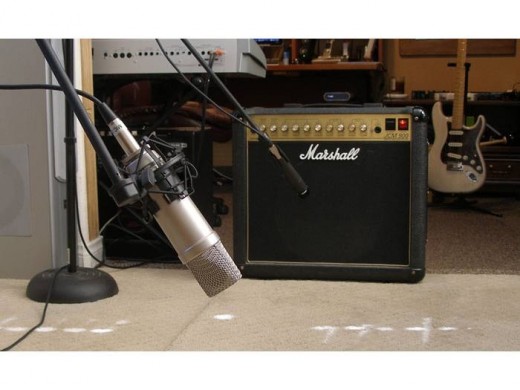
Room Mic
If you find yourself recording in an old castle, you can try this Jimmy Page technique. Page used to say that distance equals power, and what he meant by that was that instead of placing a mic right up on the speaker cone, place a mic 5 feet back, 10 feet back, 20 feet back or wherever, and then run the signal through a compressor. This way, you are capturing the sound of the guitar developing into the room and interacting acoustically with everything around it. Now, depending on what you're doing, this might not be the technique for you, but it can be a nice way to add some cool depth to a track if used in combination with close miking also. Just be careful to make sure that the microphones are all in phase with each other.
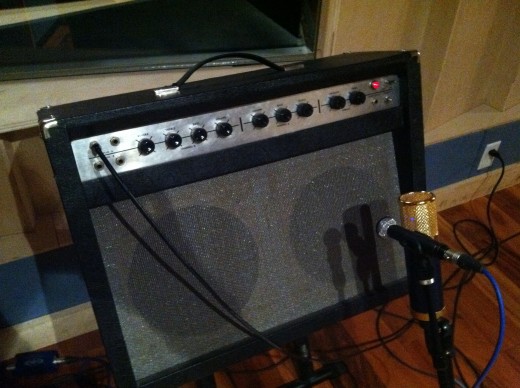
LDC with Ribbon
This is a technique that works great for clean guitars, maybe something with a "Fendery" sound. Take a large diaphragm condenser (capacitor) microphone and place it about 12 inches from the speaker. The Audio-Technica 4047 is nice for this, and if you can afford it, a tube microphone like a Neumann U47 is even better. If it is pattern selectable, keep it on cardioid. Mix this with a nice warm ribbon mic. I like to pair our U47 with a Royer 122 or a Coles 4038. Place them right next to each other, you know... again with the phase stuff. Blend the two to taste when you're mixing.
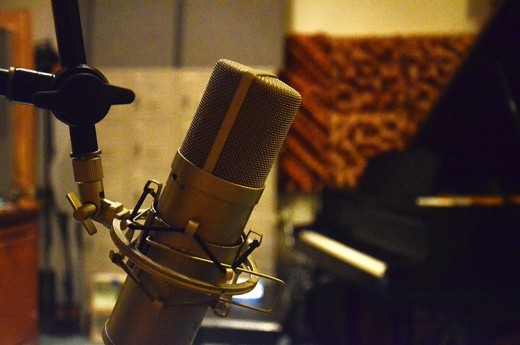
Mic the Cab, Not Just the Speaker
This is similar to the previous technique. The difference is that there is only the large diaphragm condenser, and it is further back front the speaker cabinet. Do this on a cab with 2 or 4 speakers and point the mic right in between them. Make sure the amp is nice and loud. Like crank it.
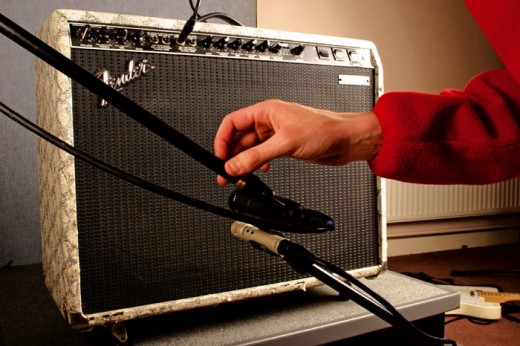
SDC with Ribbon
Use a small diaphragm condenser up near the speaker cone, and pair it with a nice dark ribbon mic. You know the deal by now, get them phase aligned and happy. Use the condenser to bring out the detail and the bite. It can be a little harsh on its own, but find a good place for it and then mix it with a ribbon to beef it up and give the tone some body.
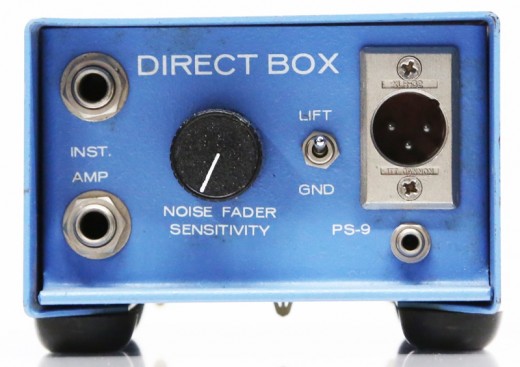
Direct
Don't forget about the viability of just plugging the guitar directly in to a preamp. Obviously bass guitars are recorded DI like this all the time, but some very great guitar tones can come from it.
Engineer Wyn Davis once said this about working with George Harrison - " When George came in, he looked at all the stuff and said, ‘I’ll just go direct.’ I said, ‘Really?! Okay, cool.’ I played the track and for a while I was sweating it. The guitar didn’t sound very good; I thought I was blowing it. George just fiddled around with the song for about half an hour and finally said, ‘Okay, I’m ready.’ I was completely dumbfounded when all of a sudden, the guitar sounded perfect. He played a couple of passes, doubled it, and when it was done, it sounded exactly like George Harrison. So like I said, barring some complete intrusion by the engineer trying to impose something entirely inappropriate on the performance, it’s in the fingers."
So I mean, you have to be as good of a guitar player as George Harrison, but still...it is possible!
Oh, one last thing...
TUNE THE GUITAR!!
It doesn't matter how good it sounds if its not in tune!
And Your's?
Which of these techniques do you use most often?
Post some of your favorite techniques that I didn't list!
Some of the mics listed...




